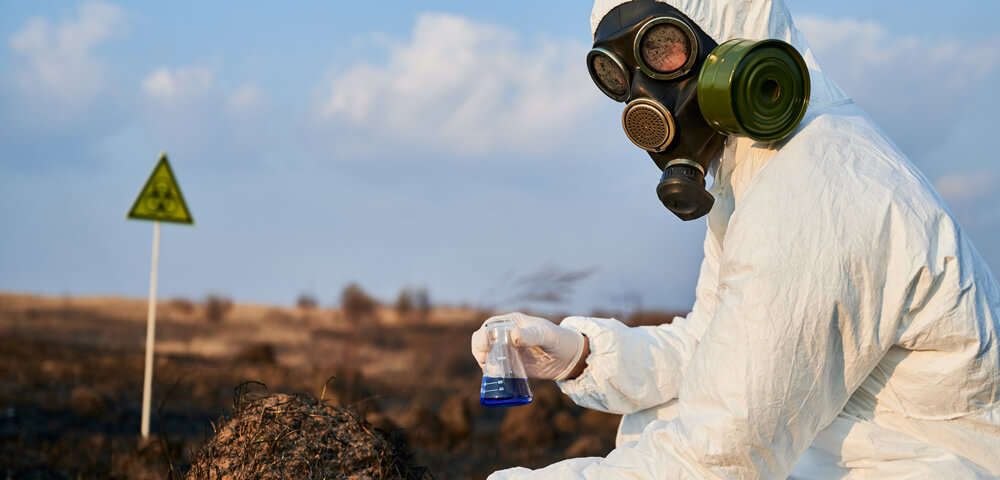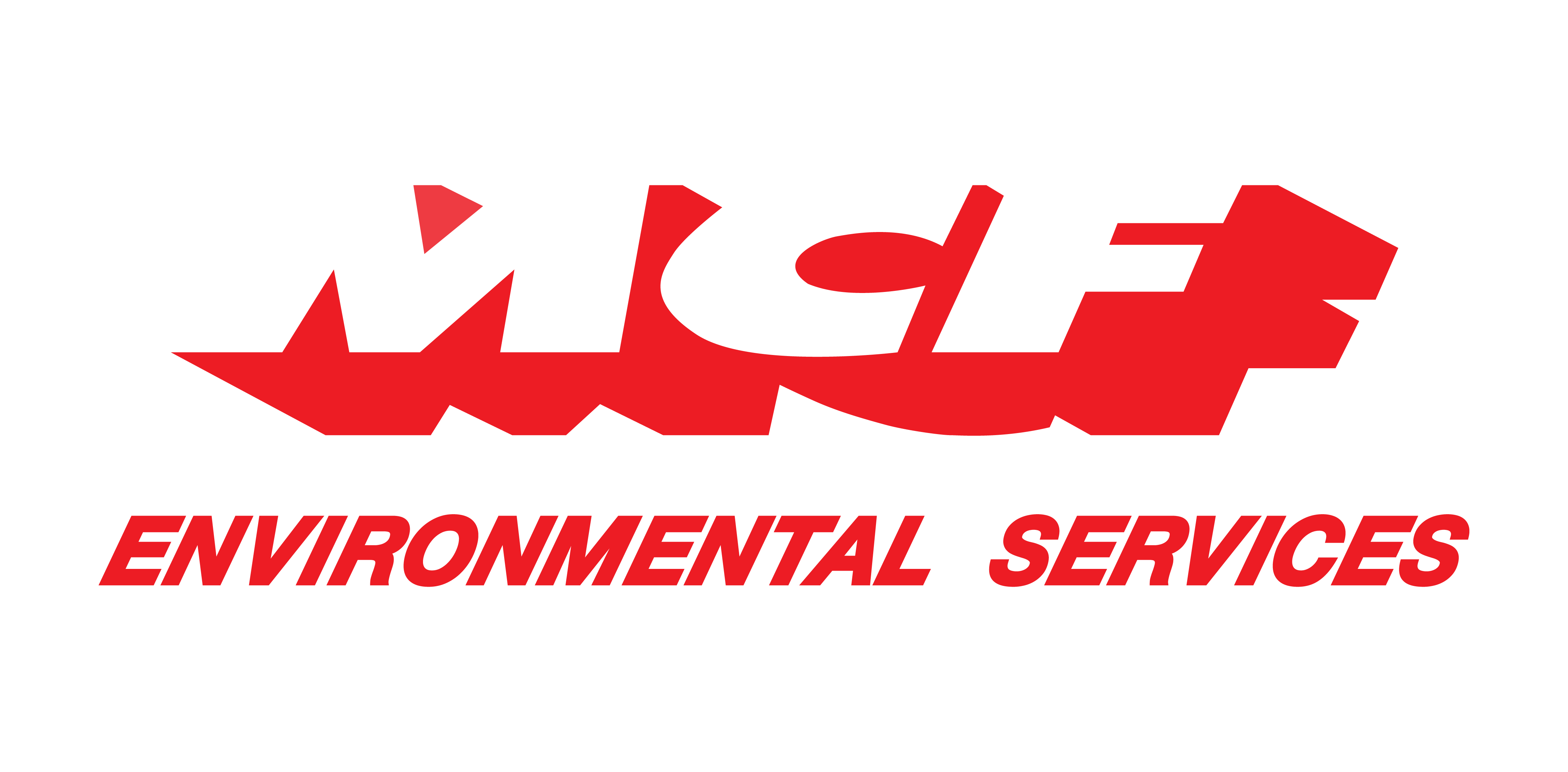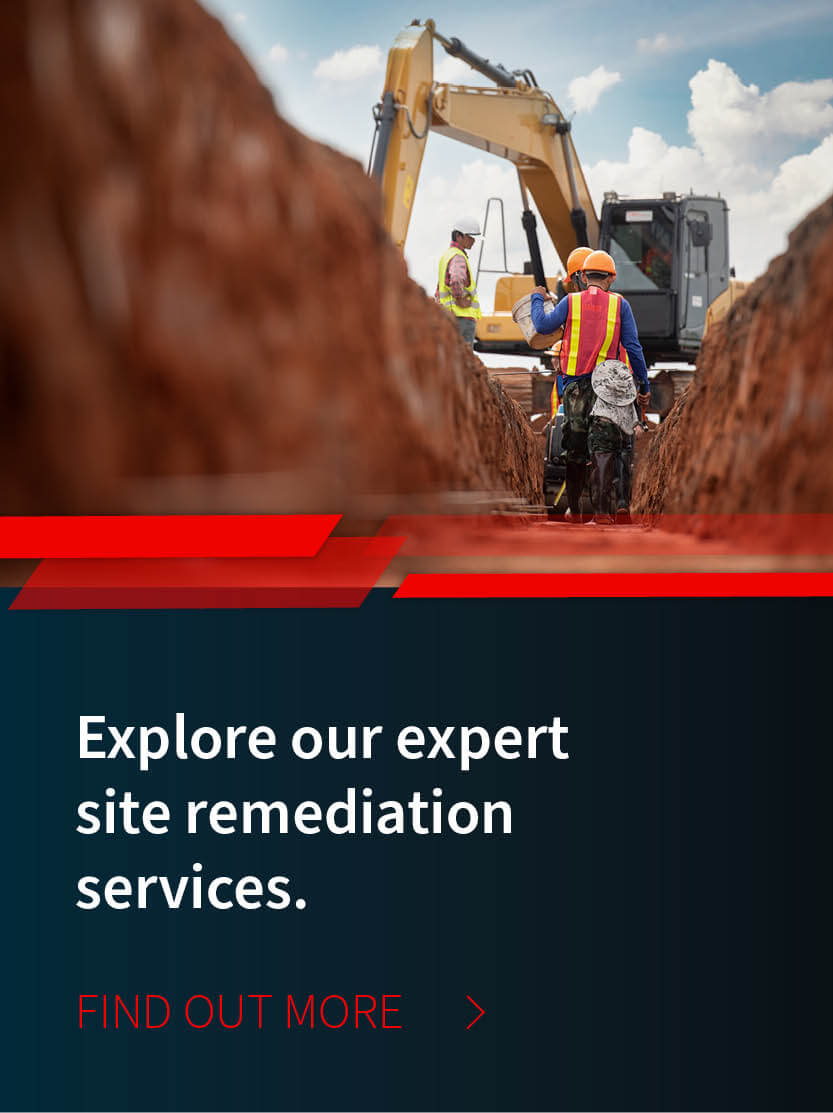
/ IN THIS BLOG
01 / Site cleanup = environmental remediation
What the EPA refers to as “environmental remediation” might be more familiar to you as “site cleanup.” It’s the removal of pollutants or contaminants from environmental media (i.e., soil, sediment, or water). But call it what you will – there are at least three circumstances in which you need to know about it.
02 / In what circumstances is environmental remediation necessary?
03 / The responsibility for environmental remediation is yours – and yours alone
In any of these three cases, whether you’ve concluded by yourself that you own a property in need of environmental remediation – or some local, state, or federal authority has so determined – the burden is on you to complete the site-cleanup within the law.
You can’t just go out with a shovel and wheelbarrow and start digging up pollutants, however. There are issues. Not the least among them: the safe and legal transport, treatment, and/or disposal of hazardous waste materials.
Also bear in mind, environmental remediation is subject to a host of EPA regulations. And, in cases where pertinent laws are either nonexistent or advisory, your situation might instigate ad hoc requirements based on presumed risks, previously unconsidered.
As in all things regarding the EPA, it’s crucial to get expert advice.
04 / Environmental remediation assessment and methodology
If you own a site needing environmental remediation, it will need to be analyzed to determine the size, type, and extent of contamination; the environmental media affected; and the local environmental and geological characteristics.
This requires soil sampling, chemical analyses, and other scientific methods. Again – get expert advice before proceeding.
As to the actual environmental remediation, there are two approaches.
In-situ methods treat the soil and groundwater without removal. They involve such technologies as “soil vapor or steam-enhanced extraction,” “chemical oxidation,” “bioremediation‑phytoremediation,” “thermal desorption,” and other chemical interventions.
A word about brownfield sites
So-called brownfield sites are industrial-sized abandoned, idled, or underused properties in which redevelopment is hampered by environmental contamination.
Think abandoned railroad yards, oil refineries, steel plants, liquid/chemical storage facilities, and heavy manufacturing facilities.
The EPA maintains a Brownfields Program to provide funds and technical assistance to states, communities, and other economic stakeholders to assess, remediate, and reuse brownfields.
Contact us to find out more.
05 / EPA regulation of environmental remediation efforts
The EPA supervises the scientific examination of a property needing environmental remediation per RCRA (e.g., soil sampling, chemical analysis, etc.). The environmental remediation itself might be performed by the EPA, other federal agencies, states, or local municipalities
In many cases, however, the party responsible for the contamination is required to conduct the environmental remediation. Thus, the company you engage to assist you will have to be properly “licensed and permitted” per the EPA, as well as by any number of state and local authorities.06 / Get expert consultation
Given the close scrutiny the EPA affords site cleanup, it’s important that you hire a hazardous waste management company that’s an expert in – and specifically licensed for – environmental remediation.
By doing so, you’ll know that your environmental remediation efforts comply with all EPA regulations and mandates – as well as any unforeseen requirements based on presumed risks. More specifically:
For ex-situ remediation, look for documented, fully compliant experience in the hauling and/or disposing of contaminated soil and groundwater.
For in-situ remediation, look for a documented history of sound scientific practice.
Remember, RCRA dictates that you’re responsible for any hazardous waste from “cradle to grave.” This includes its generation, transportation, treatment, storage, and disposal.
You’re not only accountable for a hazardous waste from the moment it’s generated. You’re also legally responsible for its safe transportation to wherever it will be ultimately processed or disposed of.
A noncompliant environmental remediation project can cause you more legal, regulatory, and environmental headaches than it solves.
Don’t take chances. Contact us today. Or call 866.315.8116
And thank you for reading our blog!
Robert Losurdo
President, COO








